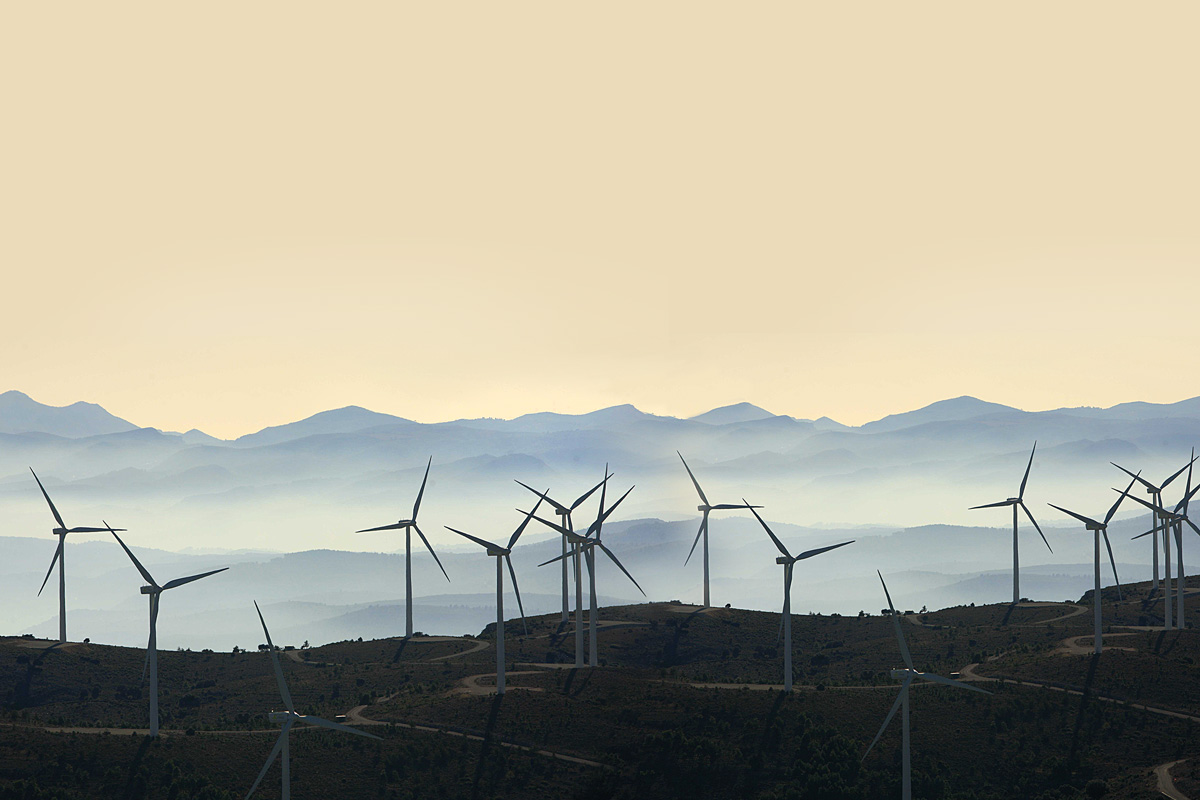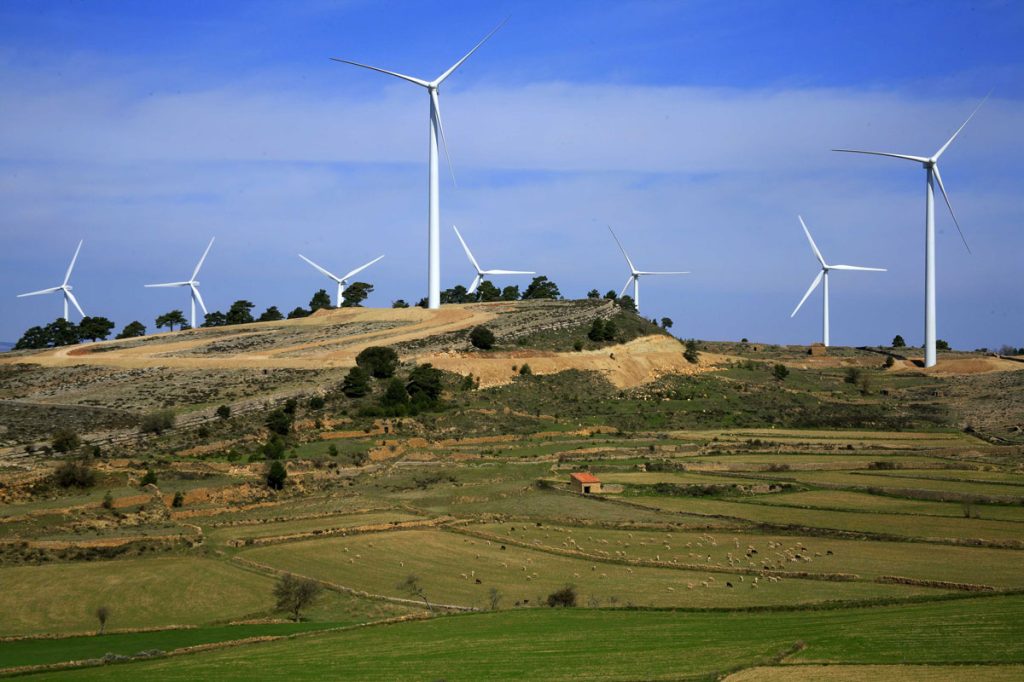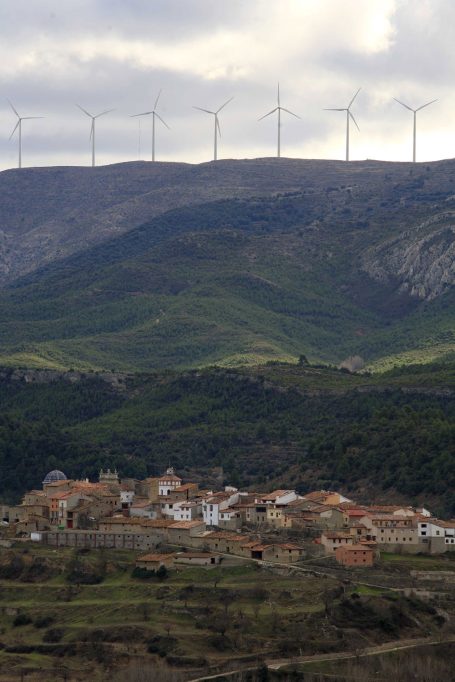
The future energy model in our country is based, among others, on wind power. However, there is a debate over landscape living together with this clean kind of energy, mostly because of the great transformation of the landscape aerogenerators cause.
Aerogenerators usually are increasingly taller and tend to be situated on mountain crest lines or areas where wind is more constant and intense. Aerogenerators are grouped in wind farms, often close to a control building, an electrical transformation substation and a feeder line, artificially added to the landscape. The sea is also an optimal place for aerogenerators, thanks to the perseverance of the wind. The problem is that, more often than not, the areas with better wind conditions are also more visually exposed areas and with a highly symbolic meaning.

Wind farm at Vilafranca (Castellon). / Photo: Valentín Rodríguez
The presence of aerogenerators causes controversy. Some people find their slender shapes and their white colour quite pleasant; they see them as a symbol linked to sustainability. Others feel quite the opposite, because these clash with the traditional rural landscapes and distort the scenery. For these people, aerogenerators provoke more than just a visual impact; they provoke an impact on the nature of an area, which has more to do with identity, culture and feelings, which explain why a person feels a part of somewhere. This is something that should not be undervalued. Often, the opposition to these wind farms has been trivialised and the controversy has been considered a simple aesthetic debate, while the reasons for the rejection to these often poorly explained projects is more complex than that.

Sorita del Maestrat (Castellon). / Photo: Valentín Rodríguez
The governments in France, Scotland, and other places with a long tradition of the defence of the landscape, know quite well and have always understood that, for new wind farms to be accepted, aerogenerators can’t be erected as if one was sticking needles to a cushion, randomly, but they have to be combined with ecologic, historical, aesthetic and symbolic values of the landscape. That is why, long ago, these governments, together with wind power companies, trying to preserve the landscape, published handbooks providing guidance and examples for minimising the impact of aerogenerators on the landscape. Fortunately, nowadays we have enough knowledge, experience and technology, like landscape visibility analyses or 3D modelling, which allow us to objectively affirm that there are places where aerogenerators fit and others where they don’t. In relation to the land, it would be advisable to avoid their installation in emblematic areas or right in front of important monuments, to gather them together instead of scattering them, and taking into account structural elements like land lots, roads, or the skyline, among others. In relation to the sea, it would be advisable, for instance, to avoid popular coastal areas, to study the most harmonious geometry, and, when technological development allows it, erect them in the sea.
It is also true that we have not valued enough, and we should, the potential of these facilities to give more quality and identity to marginal areas, industrial estates and commercial areas with very little interest, or spaces between infrastructures, places where it is difficult to appreciate coherence or certain landscape values. Well located, aerogenerators can reverse the perception of these areas for the population, adding aesthetic and identity values or even become economy attractors.





